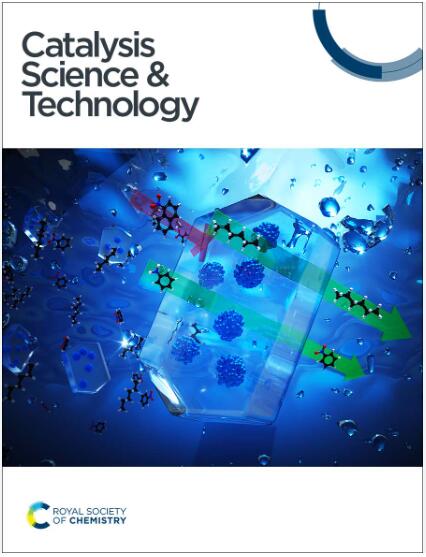Density functional theory calculation of first-row transition metals anchored on pyridine-based graphynes as single-atom catalysts for electrocatalytic CO2 reduction†
IF 4.2
3区 化学
Q2 CHEMISTRY, PHYSICAL
引用次数: 0
Abstract
The electrocatalytic reduction of CO2 to produce chemicals or fuels is widely regarded as an effective strategy for achieving carbon neutrality. Single-atom catalysts have garnered significant attention owing to their exceptional atomic utilization efficiency. In this study, we employed spin-polarized density functional theory to investigate the electrocatalytic reduction of CO2 on first-row transition metals anchored on pyridine-based graphynes (TM@pdGYs). Analysis of binding energies, cohesion energies and formation energies indicates their high structure stability and synthesis feasibility. The results of electronic structure analysis showed a robust interaction between metal atoms and pdGY, with the forming of stable covalent bonds. Competitive analysis with the hydrogen evolution reaction (HER) indicates superior selectivity for CO2 reduction over the HER for all the TM@pdGYs. We also constructed Gibbs free energy level diagrams for the production of four C1 products by each catalyst, revealing that CH4 and HCOOH are the most favorable products. Notably, Cr/Fe/Co/Zn@pdGY exhibits excellent CO2 reduction performance with low limiting potentials (−0.13 V to −0.38 V), enabling further decrease in ΔGmax under applied external potential, and possibly rendering the reaction completely spontaneous. These findings suggest that TM@pdGYs represent a promising class of electrocatalysts for CO2 reduction.

吡啶基石墨烯上第一排过渡金属作为电催化CO2还原单原子催化剂的密度泛函理论计算
电催化还原二氧化碳以生产化学品或燃料被广泛认为是实现碳中和的有效策略。单原子催化剂因其优异的原子利用效率而受到广泛关注。在本研究中,我们采用自旋极化密度泛函理论研究了吡啶基石墨炔上第一排过渡金属的电催化还原CO2 (TM@pdGYs)。结合能、内聚能和形成能分析表明它们具有较高的结构稳定性和合成可行性。电子结构分析结果表明,金属原子与pdGY之间有很强的相互作用,形成稳定的共价键。与析氢反应(HER)的竞争分析表明,在所有的TM@pdGYs中,析氢反应对CO2还原的选择性都优于析氢反应。我们还构建了每种催化剂生成4种C1产物的吉布斯自由能级图,表明CH4和HCOOH是最有利的产物。值得注意的是,Cr/Fe/Co/Zn@pdGY在低极限电位(−0.13 V至−0.38 V)下表现出优异的CO2还原性能,使ΔGmax在外加电位下进一步降低,并可能使反应完全自发。这些发现表明TM@pdGYs代表了一种很有前途的二氧化碳还原电催化剂。
本文章由计算机程序翻译,如有差异,请以英文原文为准。
求助全文
约1分钟内获得全文
求助全文
来源期刊

Catalysis Science & Technology
CHEMISTRY, PHYSICAL-
CiteScore
8.70
自引率
6.00%
发文量
587
审稿时长
1.5 months
期刊介绍:
A multidisciplinary journal focusing on cutting edge research across all fundamental science and technological aspects of catalysis.
Editor-in-chief: Bert Weckhuysen
Impact factor: 5.0
Time to first decision (peer reviewed only): 31 days
 求助内容:
求助内容: 应助结果提醒方式:
应助结果提醒方式:


